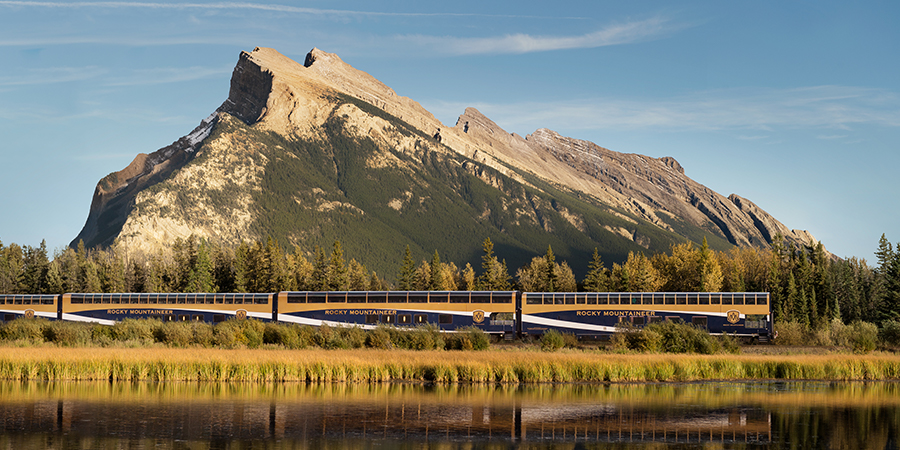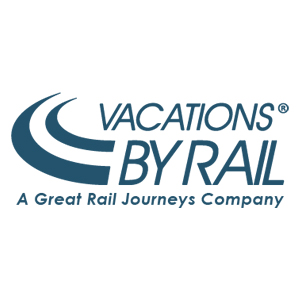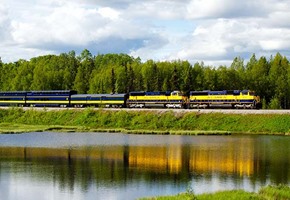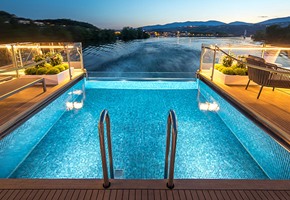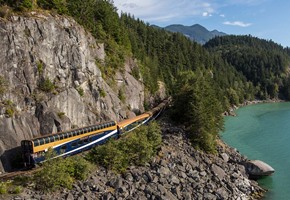A storied route that means just as much to historians as it does to sightseers, Rocky Mountaineer's First Passage to the West route is touted for its unique ability to connect East and West Canada over 3,200 kilometers of track. The train departs from the coastal city of Vancouver, from which it twists and turns through the Canadian Rockies before arriving in the resort town of Banff in the heart of Banff National Park. Along the way, you will enjoy the vast amenities of the Rocky Mountaineer, including its indulgent meal offerings, and soak in some of the most glorious mountain views you can imagine. While the Canadian Rockies are beautiful in and of themselves, travelers can look forward to these 10 highlights of the Rocky Mountaineer First Passage to the West route:
1. Cisco Crossing
Upon departing Vancouver, one of the first scenic delights you encounter appears as you approach the Fraser River. Cisco Crossing is a pair of railway bridges, each in its unique style, that cross over the river. The older of the two built originally in the 1880s; the Canadian Pacific Railway bridge is 160 meters long. Thirty years later, the arched, 247-meter Canadian National Railway bridge was constructed near the original. Often, trains can be seen crossing both bridges simultaneously. Besides the engineering marvel of the bridges themselves, you will be impressed by Fraser Canyon in which they are built.
2. Black Canyon
Another nearby highlight of Fraser Canyon is a smaller canyon called Black Canyon. Covered in dark shale stone, the canyon turns black when it rains, which is a truly magnificent sight when paired with the deep blue water of the river below and the lighter coloration of the surrounding rock and sand. The Black Canyon is situated near Hell's Gate, which is the narrowest section of the Fraser River, so do not put up your camera yet.
3. Kamloops
Situated at the junction of the North and South Thompson Rivers, Kamloops offers city scenery contrasting the vast mountain terrain. This destination is known for its deep history, as it was founded over 7,000 years ago by the people of the Shuswap First Nation and later became a fur trading settlement and a gold mining community in the 1800s. You will see the rivers and Kamloops Lake, as well as modern buildings abutting the organic landscape, before setting off again from the Kamloops train station.
4. Hoodoos
Just outside Kamloops is a unique sight that is as impressive as it is awe-inspiring: hoodoos. Formed from volcanic rock over 200 million years ago, these wonders were created due to erosion, rain, frost, and snow. Legend says that the hoodoos are actually giants that come to life at night to protect the region, but because you will be traveling through the hoodoos during the day, you will never know!
5. Stoney Creek Bridge
An engineering marvel, Stoney Creek Bridge is a true highlight of the Rocky Mountaineer First Passage to the West route. This bridge was originally constructed out of wood in 1885 but was replaced with a steel structure in 1893. Crossing Mount Tupper nearly 100 meters above the creek bed, this bridge needed extra support as train technology advanced and engines got heavier. In 1929, the problem was solved by building the new bridge, complete with arched supports, directly over the old bridge without disrupting service at all.
6. Kinbasket Lake
A picture-perfect moment, approaching Kinbasket Lake is a sight to behold. The lake's beautiful blue-green waters compliment the rugged mountain landscape beautifully and make the site a photographer's dream. While this lake is man-made, there is no lack of natural beauty.
7. Kicking Horse River
Much like the early 19th century explorers that blazed this trail, your rail journey takes you along Kicking Horse River. Surrounded by lush evergreens and bound by jagged mountain peaks, the clear waters of this river move quickly, making it a favorite spot of whitewater rafters. As the train follows along the river you may notice its descent; in fact, Kicking Horse River descends more than 350 meters as it flows down from its highest point.
8. Spiral Tunnels
Because of the descent of Kicking Horse River, the Canadian Pacific Railway was challenged with the task of getting locomotives through the mountains and across the river safely. The answer was the Spiral Tunnels. Completed in 1909, this carefully planned maze of tunnels and tracks takes travelers through Cathedral Mountain on the Upper Spiral and Mount Ogden on the Lower Spiral. Along the way, the tracks cross the river twice and switch back around themselves. The truly spectacular experience of the Spiral Tunnels is only available aboard the Rocky Mountaineer - no other rail line travels through them.
9. Lake Louise Train Station
Storied for its natural beauty and its gorgeous lake, one of the last places the train passes through before arriving in Banff is Lake Louise. While the crystalline waters of the lake may not be visible from the tracks, you will see the charming hand-built log train station sitting at the base of the mighty Canadian Rockies. This station is surrounded by wilderness, so you may even spot wildlife while you are stopped.
10. Castle Mountain
This looming mountain is situated approximately halfway between Lake Louise and the Rocky Mountaineer's final destination of Banff. The mountain was so named in the mid-1800s by Sir James Hector for its castle-like appearance. Covered in dark rock, this impressive mountain soars 2,766 meters into the sky and offers a wonderful photo opportunity before the train continues meandering route the Rockies and arrives in Banff.
The Rocky Mountaineer First Passage to the West highlights some of the most spectacular sights in the least-seen parts of the Canadian Rockies. Much like the explorers before you, you will be left in awe of the still beauty this mountain range has to offer. At Vacations By Rail, we make it easy to soak it all in. Our vacations on the First Passage to the West route take travelers between Vancouver to Banff during daylight hours only, meaning you get to soak in all the scenic highlights. The Canadian Rockies are calling; answer with a rail vacation through Vacations By Rail.

